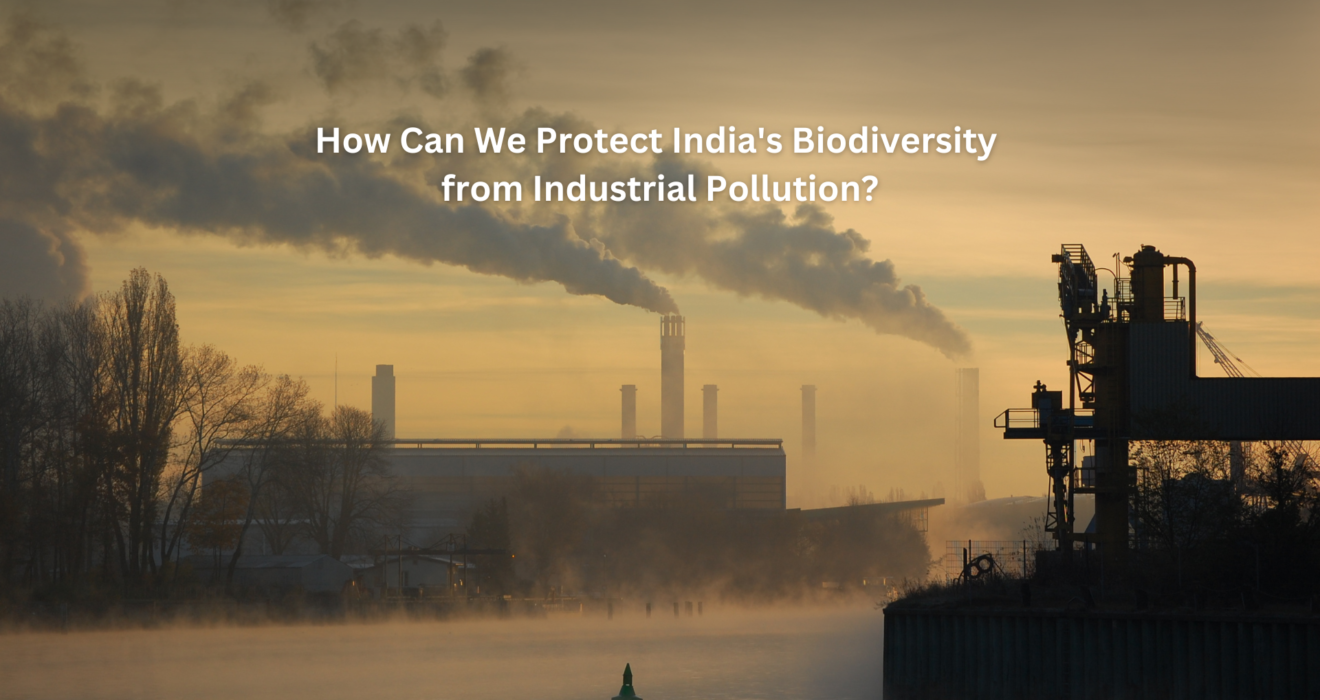In the vast and diverse landscape of India, a crisis is silently escalating, threatening the very fabric of its natural world. As a country that harbors 8% of the world’s biodiversity, India stands as a sanctuary for an extraordinary variety of plants and animals. However, the ecosystems that sustain this richness are increasingly under siege from the relentless effects of pollution.
From the smoky skies above bustling cities to the polluted rivers that wind through the countryside and the contaminated soils on which so many depend, the reach of pollution extends far and wide. The consequences of this environmental degradation ripple through the entire web of life, leading to a concerning acceleration in biodiversity loss.
Pollution manifests in several forms—air, water, and soil—and each poses unique threats to wildlife and habitats. Ecotoxicology, the scientific study of how pollutants impact ecosystems, reveals the intricate ways these toxins can disrupt food chains, harm individual species, and degrade whole ecosystems. This intertwined relationship between pollution and biodiversity loss underscores the urgent need for decisive action at multiple levels, especially from corporations and policymakers.
Air pollution is one of India’s most pressing environmental health challenges, affecting both people and wildlife. In 2019 alone, an estimated 1.6 million deaths in the country were attributed to air pollution, according to the 2022 State of Global Air report. For wildlife, especially birds, the situation is equally alarming. Birds are particularly vulnerable to pollutants like nitrogen oxides and sulfur dioxide, which can impair their respiratory systems, reduce reproductive success, and disrupt migratory patterns. The once-common sparrows, for instance, are now less visible in many urban areas due to deteriorating air quality.
Beyond its impact on individual health, air pollution reshapes habitats. Forests, which serve as critical carbon sinks and biodiversity hotspots, face threats from airborne pollutants, including acid rain. This phenomenon weakens trees and alters the entire food web that relies on healthy forest ecosystems. In urban areas, air pollution degrades habitats and diminishes the vital services that green spaces offer—services such as air purification, climate regulation, and water filtration, which benefit not only wildlife but also human populations.
Water Pollution and Its Devastating Effects on Aquatic Life
Transitioning from air to water, India’s water bodies, essential for sustaining life, are heavily polluted due to industrial effluents, agricultural runoff, and untreated sewage. Nearly 70% of the country’s surface water is now considered unsafe for consumption, threatening the survival of countless aquatic species. Harmful agricultural runoff containing nitrates and phosphates can lead to algal blooms, depleting oxygen levels in rivers and lakes, creating “dead zones” where aquatic life struggles to survive.
The situation is particularly dire in rivers like the Ganges, where sacred significance collides with extreme pollution. Industrial discharges, sewage, and plastic waste contribute to mass fish deaths and a loss of biodiversity. As fish populations plummet, local communities face disruptions to their livelihoods and food security. Furthermore, plastic pollution exacerbates the crisis, as aquatic animals ingest plastic debris, mistaking it for food, leading to injury, malnutrition, and often death. Reports indicate that approximately 2,141 marine species are impacted by this growing issue.
Soil Pollution
While air and water pollution are more visible, soil pollution is an equally damaging yet often overlooked threat. In India, the extensive use of pesticides and industrial chemicals has led to widespread soil degradation. Intensive agricultural practices, which rely heavily on chemical inputs, have resulted in the country consuming around 56,000 tonnes of pesticides annually. These substances not only kill pests but also harm non-target organisms, such as bees and other pollinators, essential for the reproduction of many plant species.
The introduction of heavy metals like lead and cadmium from industrial activities further disrupts soil and water systems, threatening plant diversity and soil health. As these pollutants accumulate, they impair agricultural productivity and weaken the overall stability of ecosystems. In rural areas, this pollution cycle perpetuates economic hardship for farmers and jeopardizes food security, creating a cascade of negative impacts that affect both human and animal life
Understanding Ecotoxicology
Ecotoxicology offers a lens through which to see how pollutants, organisms, and ecosystems are interlinked. Even at low concentrations, certain pollutants can significantly affect wildlife behavior, reproduction, and survival, disrupting food chains and causing declines in populations. For instance, when heavy metals enter aquatic ecosystems, they can be ingested by small organisms like algae. These contaminated algae are then eaten by fish, which are, in turn, consumed by fish-eating birds and humans. This process of bioaccumulation poses serious health risks not only to wildlife but also to communities that depend on subsistence fishing.
The broader implications of ecotoxicology are that as pollutants persist and accumulate in ecosystems, the resilience of these systems weakens, accelerating biodiversity loss. The intertwined nature of ecosystems means that harm in one area can have far-reaching consequences, impacting species and habitats in unexpected ways.
The Role of Businesses in Addressing Pollution
In addressing the pollution crisis, companies play a significant role in shaping the environmental landscape. In India, many industries contribute to the ongoing challenges. For instance, the textile industry is responsible for about 20% of global wastewater, much of which enters water bodies untreated. Other sectors, such as agriculture and manufacturing, often prioritize short-term profits over long-term sustainability, leading to practices that exacerbate ecological damage.
However, as awareness of environmental issues grows, there is a rising push for corporations to adopt sustainable practices. Some companies, such as ITC and Hindustan Unilever, have begun taking steps toward pollution reduction, responsible sourcing, and biodiversity conservation. While these initiatives are promising, they need to become standard practices across all industries to achieve meaningful progress. Investors and consumers are increasingly demanding that companies demonstrate their commitment to sustainability, recognizing that the health of ecosystems is directly tied to economic resilience and long-term success.
Implementing No Net Loss
To effectively combat the pollution crisis, policy interventions are crucial for reversing the damage caused by pollution. The concept of “No Net Loss” (NNL) aims to balance any loss of biodiversity with measures that ensure an equivalent gain. Implementing NNL policies can drive transformative change at both corporate and governmental levels, providing a framework for sustainable development that harmonizes economic growth with environmental protection.
NNL along with the Net Positive Impact (NPI) introduces a new approach to biodiversity conservation, highlighting the importance of balancing or even exceeding the negative impacts of development projects on natural ecosystems.
India has already taken some steps, such as the National Biodiversity Action Plan (NBAP), but more comprehensive and proactive policies are needed. NNL could serve as a cornerstone for these efforts, promoting not only the conservation of existing biodiversity but also the restoration of damaged ecosystems. Such policies, coupled with educational campaigns, can foster a culture of environmental stewardship that extends beyond regulatory compliance to embrace a genuine commitment to ecological health.
Conclusion
The urgency to address pollution’s impact on biodiversity is clearer than ever. Air, water, and soil pollution do not only threaten ecosystems; they also jeopardize human health, livelihoods, and the economy. Through the perspective of ecotoxicology, we can see how pollutants penetrate deep into the fabric of life, unraveling the connections that keep nature resilient.
For India to secure a sustainable future, corporate responsibility and effective policy measures must go hand in hand. The journey towards “No Net Loss” represents more than just a legal or ecological obligation; it is a socio-economic necessity. By committing to sustainable practices and enacting robust environmental policies, India can work towards restoring its ecosystems and preserving its natural heritage, ensuring that future generations can enjoy a world that is as diverse and vibrant as it is today.

Written by
Anjeeta Goud
Team Business development and strategy
Terracon Ecotech
Reference :
No Net Loss’ and ‘Net Gain’ of biodiversity
The impact of textile production and waste on the environment




